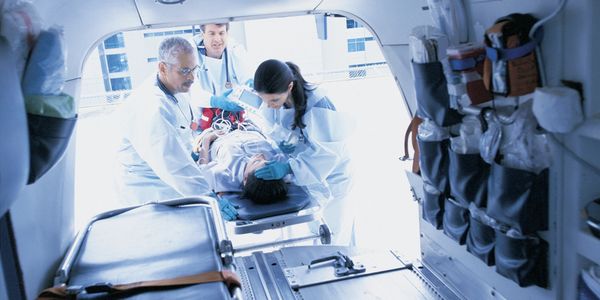HELP US UNDERSTAND

Non-Emergency Medical Transportation
Non-Emergency Medical Transportation (NEMT) refers to the transportation of patients whose medical condition does not require immediate emergency intervention but who require transportation to and from medical appoints, treatments, or procedures. NEMT services are typically used by individuals who are unable to transport themselves due to medical conditions, disabilities, or other limitations. These services ensure that patients can access necessary medical care in a safe and timely manner, often provided by specialized transportation providers equipped to accommodate patients with varying medical needs

Paratransit Transportation
Paratransit transportation refers to specialized transportation services designed to cater to individuals with disabilities or other conditions that prevent them from using regular public transportation independently. It provides door-to-door or curb-to-curb service for people who are unable to use fixed-route public transportation due to physical, cognitive, or other limitations. Paratransit services are typically provided by public transit agencies or private transportation companies and are mandated under the Americans with Disabilities Act (ADA) in the United States to ensure accessibility and equal transportation opportunities for individuals with disabilities. These services may include accessible vehicles equipped with ramps or lifts and are scheduled in advance to accommodate passengers' specific needs.

Ambulance Basic Life Support
Ambulance Basic Life Support (BLS) transportation refers to ambulance services that provide essential medical care and transportation for patients whose condition does not require advanced life support interventions. BLS ambulances are staffed by emergency medical technicians (EMTs) or basic level paramedics trained to provide basic medical care and stabilize patients during transport. This type of ambulance service is typically used for patients who require monitoring, oxygen therapy, basic wound care, or assistance with medications during transportation to a healthcare facility. BLS ambulances are equipped with basic medical equipment such as a stretcher, oxygen, bandages, and basic medications to manage patients' conditions until they reach a hospital or medical center for further care.

Ambulance Advanced Life Support
Ambulance Advanced Life Support (ALS) transportation refers to ambulance services that provide advanced medical care and interventions to critically ill or injured patients during transport to a healthcare facility. ALS ambulances are staffed by paramedics who have advanced training and certification to administer a wider range of treatments and procedures compared to Basic Life support (BLS) ambulances.
The key features of ALS transportation include:
- Advanced Medical Interventions: Paramedics in ALS ambulances are trained to perform advanced procedures such as cardiac monitoring, intravenous (IV) therapy, administration of medications (including cardiac drugs and pain management), advanced airway management (intubation), and other critical care interventions.
- Critical Care Equipment: ALS ambulances are equipped with advanced medical equipment beyond the basic level, such as cardiac monitors, defibrillators, ventilators, and devices for administering IV fluids and medications.
- Critical Patient Stabilization: ALS paramedics are skilled in stabilizing and managing critically ill or injured patients in emergency situations. They provide continuous monitoring and treatment to maintain the patients' condition and improve outcomes during transport.
ALS transportation plays a critical role in providing timely and specialized medical care to patients experiencing severe medical emergencies or traumatic injuries, ensuring they receive the necessary interventions before arriving at a hospital or specialized medical facility for further treatment.

Ambulance Transportation
- Definition: Ambulatory transportation is for individuals who are able to walk or move independently without assistance.
- Usage: Ambulatory transportation services are typically used for patients who are medically stable and do not require assistance beyond what is necessary for getting in and out of a vehicle.

Non-Ambulatory Transportation
- Definition: Non-Ambulatory transportation is for individuals who require assistance or special accommodation due to their inability to walk or move independently.
- Usage: Non-ambulatory transportation services are necessary for patients who use wheelchairs, walkers, or other mobility aids, or who have medical conditions that require them to remain seated during transport.
- Examples: This includes specialized vehicles equipped with wheelchair ramps or lifts, stretcher transportation for bed-bound patients, and vehicles that accommodate medical equipment necessary for patient care during transport.

Summary
- The key difference lies in the mobility status of the individual. Ambulatory transportation is for those who can walk or move independently, while non-ambulatory transportation is specifically designed for individuals who require assistance or specialized equipment due to limited mobility. The type of transportation provided depends on the patients' needs and ability to move safely and comfortably during transit.
8 Pembroke Street Kingston, MA 02364
Copyright © 2024
All Rights Reserved.
This website uses cookies.
We use cookies to analyze website traffic and optimize your website experience. By accepting our use of cookies, your data will be aggregated with all other user data.